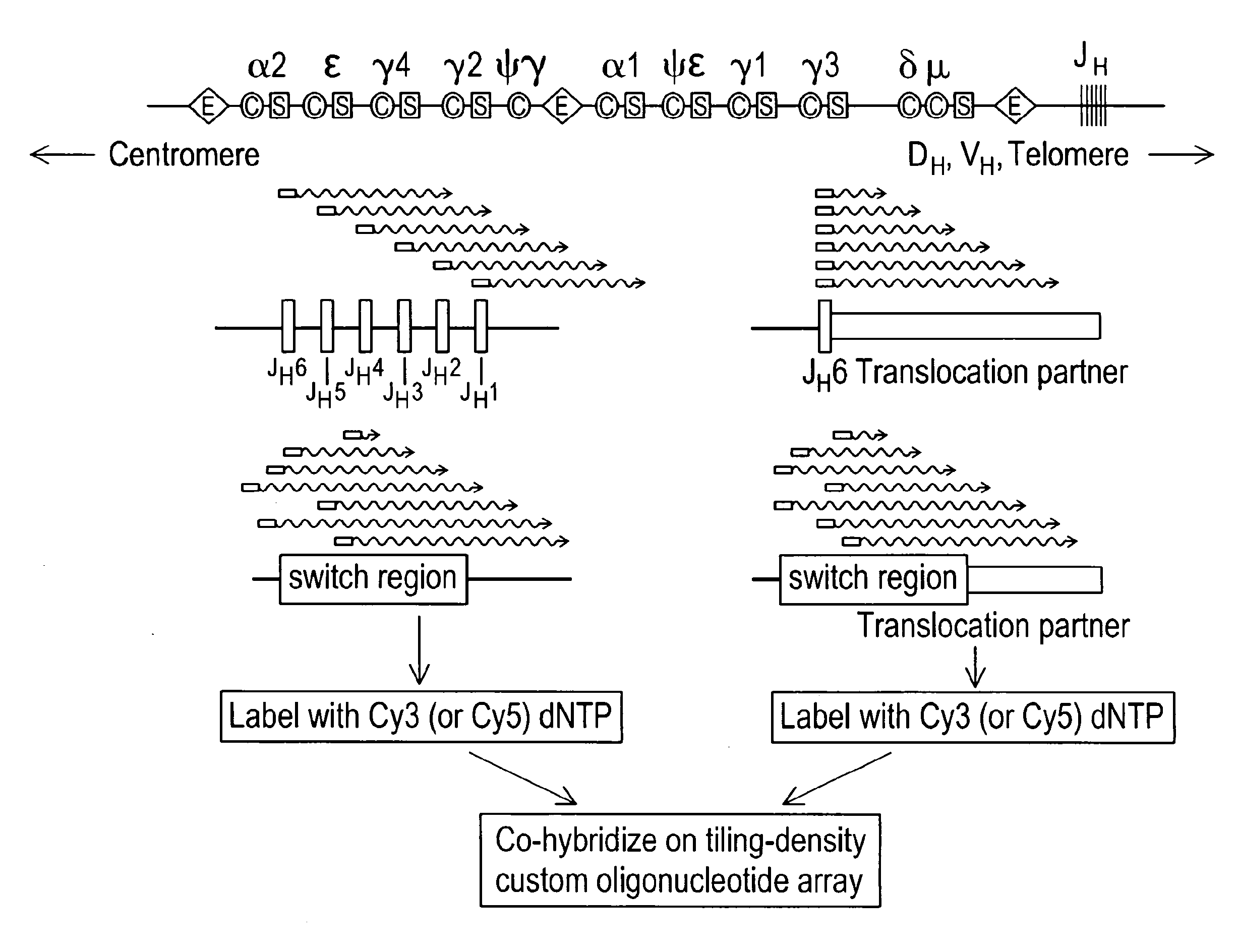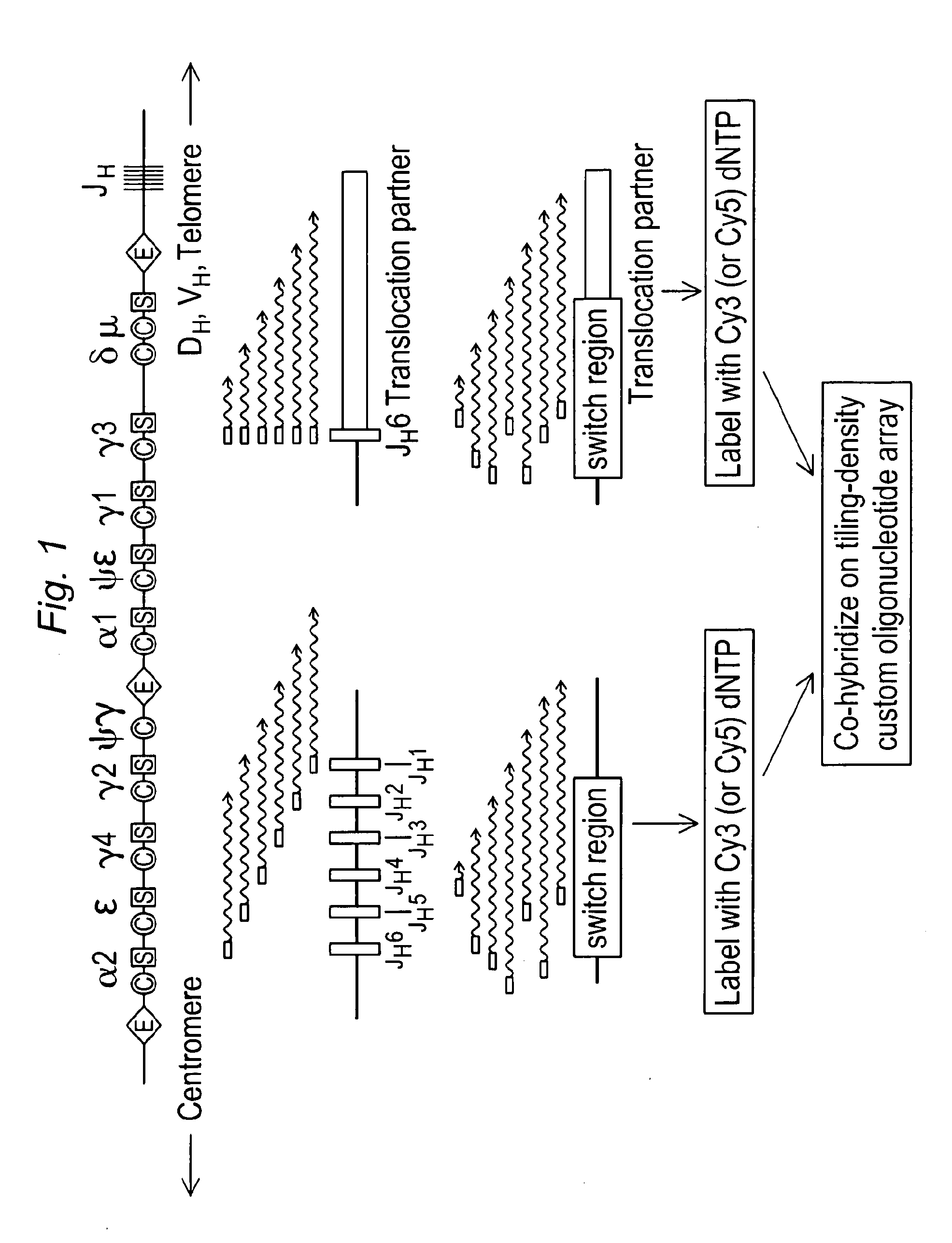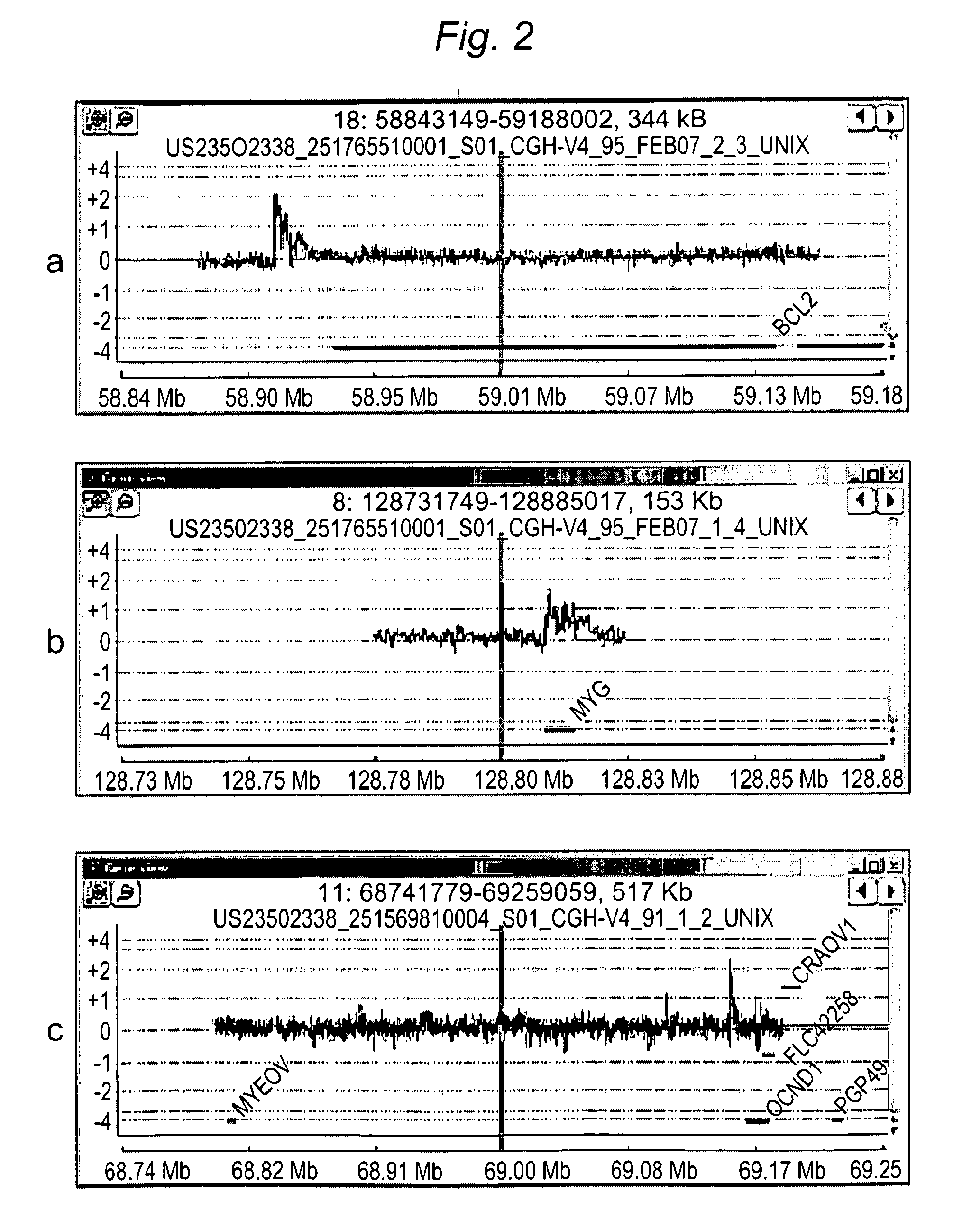DNA microarray based identification and mapping of balanced translocation breakpoints
a technology of dna microarray and breakpoint, applied in the field of dna microarray based identification and mapping of balanced translocation breakpoint, can solve the problems of inability of previous cgh methods to detect balanced genomic rearrangements like reciprocal translocations, and the general inability of cgh methods to d
- Summary
- Abstract
- Description
- Claims
- Application Information
AI Technical Summary
Benefits of technology
Problems solved by technology
Method used
Image
Examples
example 1
Identification of JH-Associated Translocation Breakpoints
[0122]ArrayCGH is designed to detect genomic imbalances but not balanced genomic rearrangements. We thus sought a means for creating synthetic genomic imbalances to mark the sites of balanced translocations on standard CGH arrays. Using balanced immunoglobulin translocations in lymphoma cell lines as a model system, we developed an enzymatic linear amplification reaction that renders balanced translocations detectable by array CGH simply by modifying genomic DNA in a targeted linear amplification step prior to fluorescent labeling and microarray hybridization. As outlined in FIG. 1, JH-associated translocation breakpoints are enzymatically amplified using a JH consensus primer, (van Dongen, 2003) resulting in linear amplification across the breakpoint junction into the translocation partner locus. Use of a single primer enables amplification of JH-associated translocations regardless of the identity of the IgH partner gene.
[01...
example 2
Identification of IgH Switch (SH)-Associated Translocation Breakpoints
[0125]Linear amplification primers were then designed to identify translocations involving the IgH switch (SH) regions. Human SH regions contain multiple tandem repeats of a characteristic repetitive sequence unit: in the Sμ, Sα, and Sε E regions, the repeat unit is the degenerate pentameric sequence G(A / G)GCT whereas in the Sγ regions it is 80-90 nt long and more complex (Max, 1982; Mills, 1990; Mills, 1995). SH-associated translocation breakpoints are distributed throughout these repetitive regions. To facilitate detection of such diverse breakpoints, linear amplification primers were designed to recognize these repeat units and prime synthesis at multiple locations within the Sμ / Sα / Sε regions (S5 primer) or the Sγ repeat regions (Sγ primer). tCGH performed using the S5 primer in place of the JH was used to identify a Sμ-MYC translocation in the Burkitt lymphoma cell line Raji (Dyson, 1985) (not shown) and a cry...
example 3
Identification of Unknown Translocation Breakpoints
[0127]To demonstrate that tCGH is capable of identifying novel breakpoints in primary tumors, we studied a series of lymphomas presumed to have JH-CCND1 translocations. Mantle cell lymphoma (MCL, reviewed in (Jares, 2007) is a mature B cell lymphoma that is characterized by the t(11;14)(q13;q32), a translocation that results in a JH-CCND1 gene fusion and over-expression of the CCND1 protein. While about 40-50% of MCL cases, including the MO2058 cell line (FIG. 3c), have breakpoints that cluster at the major translocation cluster (MTC), most MCL breakpoints are scattered throughout a large intergenic region between CCND1 and the MYEOV gene, located ˜400 kb centromeric to CCND1. To demonstrate that tCGH can detect as yet unidentified translocation breakpoints, we used it to identify and map JH-CCND1 translocations in MCL cases that did not have MTC-associated breakpoints. FIG. 6 shows the results of tCGH using the JH primer to study f...
PUM
| Property | Measurement | Unit |
|---|---|---|
| Tm | aaaaa | aaaaa |
| temperature | aaaaa | aaaaa |
| temperature | aaaaa | aaaaa |
Abstract
Description
Claims
Application Information
 Login to View More
Login to View More - R&D
- Intellectual Property
- Life Sciences
- Materials
- Tech Scout
- Unparalleled Data Quality
- Higher Quality Content
- 60% Fewer Hallucinations
Browse by: Latest US Patents, China's latest patents, Technical Efficacy Thesaurus, Application Domain, Technology Topic, Popular Technical Reports.
© 2025 PatSnap. All rights reserved.Legal|Privacy policy|Modern Slavery Act Transparency Statement|Sitemap|About US| Contact US: help@patsnap.com



